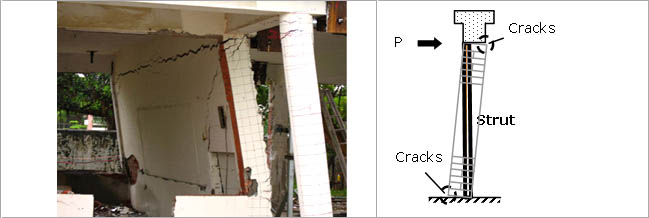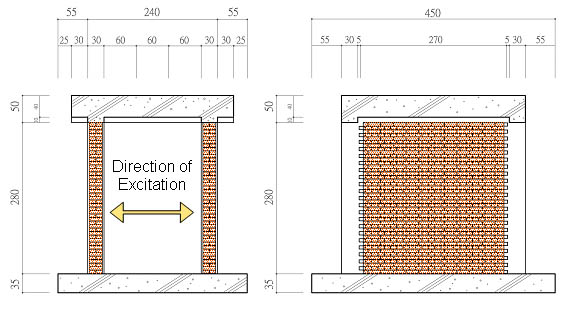
| INTRODUCTION |
A series of shaking table tests for brick masonry walls in RC frames under out-of-plane seismic motions will be performed to verify dynamic out-of-plane damaging behaviors and possible contribution of in-filled masonry walls to an RC structure. Advanced experimental devices and technologies are employed, including wireless sensors, image-based measurement, experimental data management and instant tele-presence. This experiment joints research efforts from NCREE, National Taiwan University, National Cheng Kung University, Kao Yuan University and European Laboratories for Structural Assessment. One of the collapse tests in this experiment scheduled on Oct. 13 is a technical tour of the 4th International Conference on Earthquake Engineering. Brick masonry walls are common partition walls for RC buildings in Taiwan due to their low cost and ease of construction. In older low-rise RC buildings, brick walls were laid before RC frames were built, so the walls could get better confinement from boundary members. Lately the post-laid and thinner brick walls are more popular in residence. Former researches and tests suggest that even though the structural contribution of post-laid brick walls are usually neglected, both post and pre-laid ones can provide seismic performance along the in-plane direction. However, brick walls are vulnerable and may be severely damaged or collapsed along their out-of-plane direction (as shown in Fig. 1), reducing their in-plane contributions. Therefore, better understanding on the out-of-plain strength and vulnerability of constrained brick walls should be helpful to seismic evaluation and retrofit design of brick-walled RC buildings.
Four full-scale specimens are built in this experiment are built, including a pure frame (PF), a frame with 12cm thick post-laid brick walls (A1F), a frame with 12cm thick pre-laid brick walls (B1F), and a frame with 24cm thick post-laid brick walls (B2F). Figure 2 shows the dimensions of the B2F specimen, while other specimens have the same RC frame dimensions. A 40cm thick slab which weighs about 10 tons also provides a lateral inertial force and an axial gravity load to each specimen.
Besides conventional wired accelerometers, displacement transducers and strain gauges, wireless sensors and image-based measurement are also employed in the measurement. These wireless or non-contact approaches are suitable for collapse experiments, large displacement measurement, or in situations or environments that wires or sensors may be damaged. These tests help further development on the wireless sensing and image-based measurement technologies. Experimental data management and instant data/video tele-presence are also employed in the experiment. They allow more researchers, engineers and students to witness the experiment through the Internet and learn the knowledge this experiment may present. (Web page: http://exp.ncree.org/bwall/) |
© 2006 National Center for Research on Earthquake Engineering

